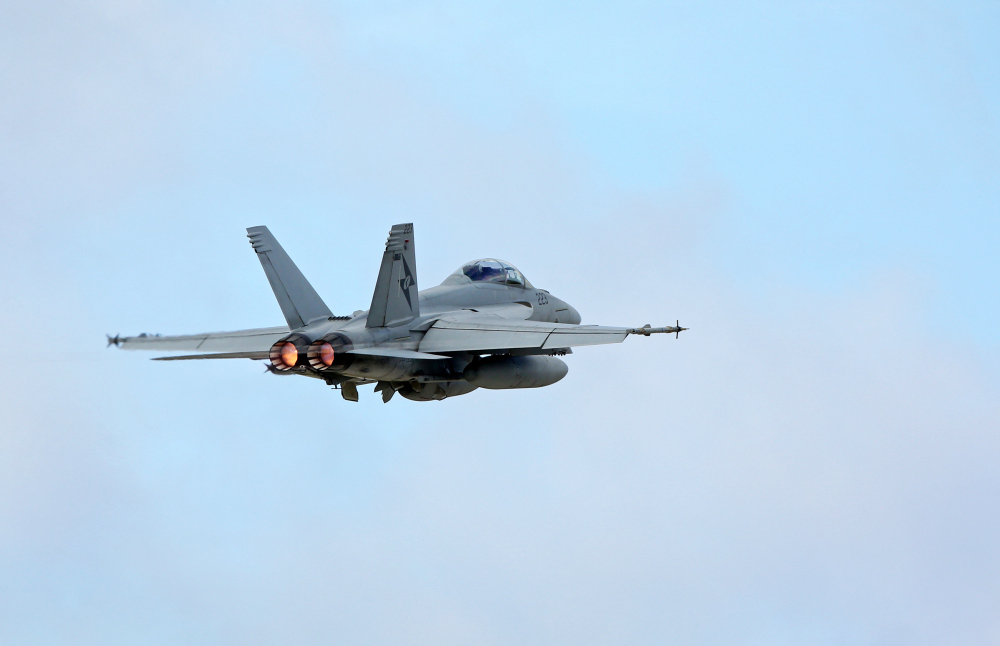DWP 2016: the future RAAF
Posted By
Ashleigh Sharp
on February 26, 2016 @ 15:31
 The 2016 Defence White Paper emphasises the importance of a potent strike and air combat capability for the defence of Australia and its national interests. Over the next decade, Defence has committed to invest between $44.2 and $56.1 billion in key air capability developments.
The RAAF’s current air combat capability is built on a fleet that combines 24 F/A-18F Super Hornets and 71 F/A-18A/B Hornets with six E-7A Wedgetail airborne early warning and control platforms and five KC-30A multi role tanker transports.
Below are the key platforms which the RAAF will acquire and develop over the next decade:
The 2016 Defence White Paper emphasises the importance of a potent strike and air combat capability for the defence of Australia and its national interests. Over the next decade, Defence has committed to invest between $44.2 and $56.1 billion in key air capability developments.
The RAAF’s current air combat capability is built on a fleet that combines 24 F/A-18F Super Hornets and 71 F/A-18A/B Hornets with six E-7A Wedgetail airborne early warning and control platforms and five KC-30A multi role tanker transports.
Below are the key platforms which the RAAF will acquire and develop over the next decade:
- The RAAF is currently in the process of acquiring fifth-generation F-35A Lightening II Joint Strike Fighters to replace the ageing Hornet. 72 F-35As will begin to enter operational service from 2020
- 12 EA-18G Growlers will enter service from 2018 and provide electronic warfare support
- Seven additional P-8A Poseidon maritime surveillance and response aircraft will be acquired for a total of 15 aircraft by the late 2020s
- Seven MQ-4C Triton unmanned aircraft will be acquired from the early 2020s to complement the surveillance capabilities of the Poseidon
- Two additional C-17A Globemaster III transport aircraft have already been acquired to bring the total to 8 heavy lift C-17As
- Two additional KC-30A refuellers will be introduced into service before the end of this decade for a total of seven, and consideration will be given to a follow-on acquisition of further air-to-air refuellers, to take the refueller fleet to nine aircraft
The 2016 DWP has stated that options to replace the Super Hornets in the late 2020s will be considered at the time, according to future developments in technology, the strategic environment and Australia’s experience in operating the JSF. It could include either a fourth operational squadron of JSFs or possibly a yet to be developed unmanned combat aerial vehicle.
Part of the investment in air combat capability will be targeted at better connecting the communications, sensor and targeting systems of RAAF platforms such as the JSF, E-7A Wedgetail and Growler. The DWP acknowledges that realising the full potential of new acquisitions like the F-35 and Growler is dependent on investment in intelligence, surveillance and reconnaissance, and ensuring resilient networking capabilities between these platforms and other arms of the ADF.
The strike and air combat workforce is set to increase by around 500 ADF positions. Investment is also planned for new infrastructure and facilities to support strike and air combat capability. The key highlighted proposals included upgrading facilities at RAAF Bases Tindal, Williamtown, Scherger, Learmonth and Curtin as well as on the Cocos (Keeling) Islands. Dedicated infrastructure work to support the JSF will take place at RAAF Bases Williamtown, Edinburgh, Townsville, Tindal, Darwin, Curtin, Learmonth, Pearce and Scherger. New dedicated facilities will also be built at RAAF Amberley to house and support the Growler.
The future ground-based air-defence system, which will be operated by the Army, will replace the current short-range RBS-70 air-defence system with a short-range man-portable surface-to-air system by the early 2020s. This will then be later supplemented by a medium-range surface-to-air missile system in the mid-to-late 2020s. The air combat fleet will also acquire advanced air defence and high-speed long-range strike weapons capable of attacking land and maritime targets.
Article printed from The Strategist: https://www.aspistrategist.org.au
URL to article: https://www.aspistrategist.org.au/dwp-2016-the-future-raaf/
[1] Image: http://www.aspistrategist.org.au/wp-content/uploads/2016/02/20160218RAAF8164169_165-1.jpg
[2] 2016 Defence White Paper: http://www.defence.gov.au/WhitePaper/Docs/2016-Defence-White-Paper.pdf
[3] committed to invest: http://www.defence.gov.au/WhitePaper/Docs/2016-Defence-Integrated-Investment-Program.pdf
[4] currently in the process: http://www.defence.gov.au/casg/aboutcasg/ourstructure/air/jointstrikefighterdivision/
 Print This Post
Print This Post The 2016 Defence White Paper emphasises the importance of a potent strike and air combat capability for the defence of Australia and its national interests. Over the next decade, Defence has committed to invest between $44.2 and $56.1 billion in key air capability developments.
The 2016 Defence White Paper emphasises the importance of a potent strike and air combat capability for the defence of Australia and its national interests. Over the next decade, Defence has committed to invest between $44.2 and $56.1 billion in key air capability developments.